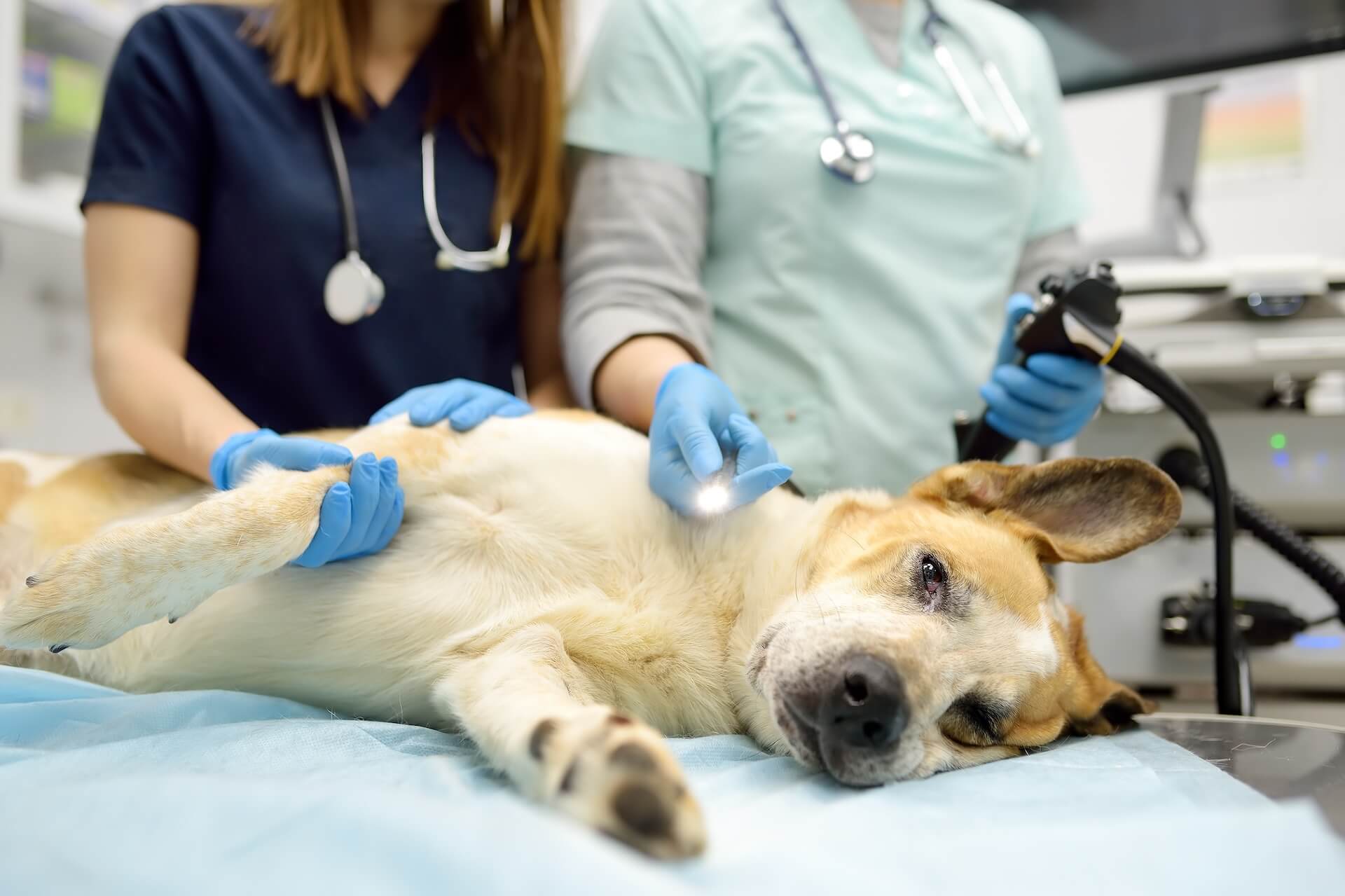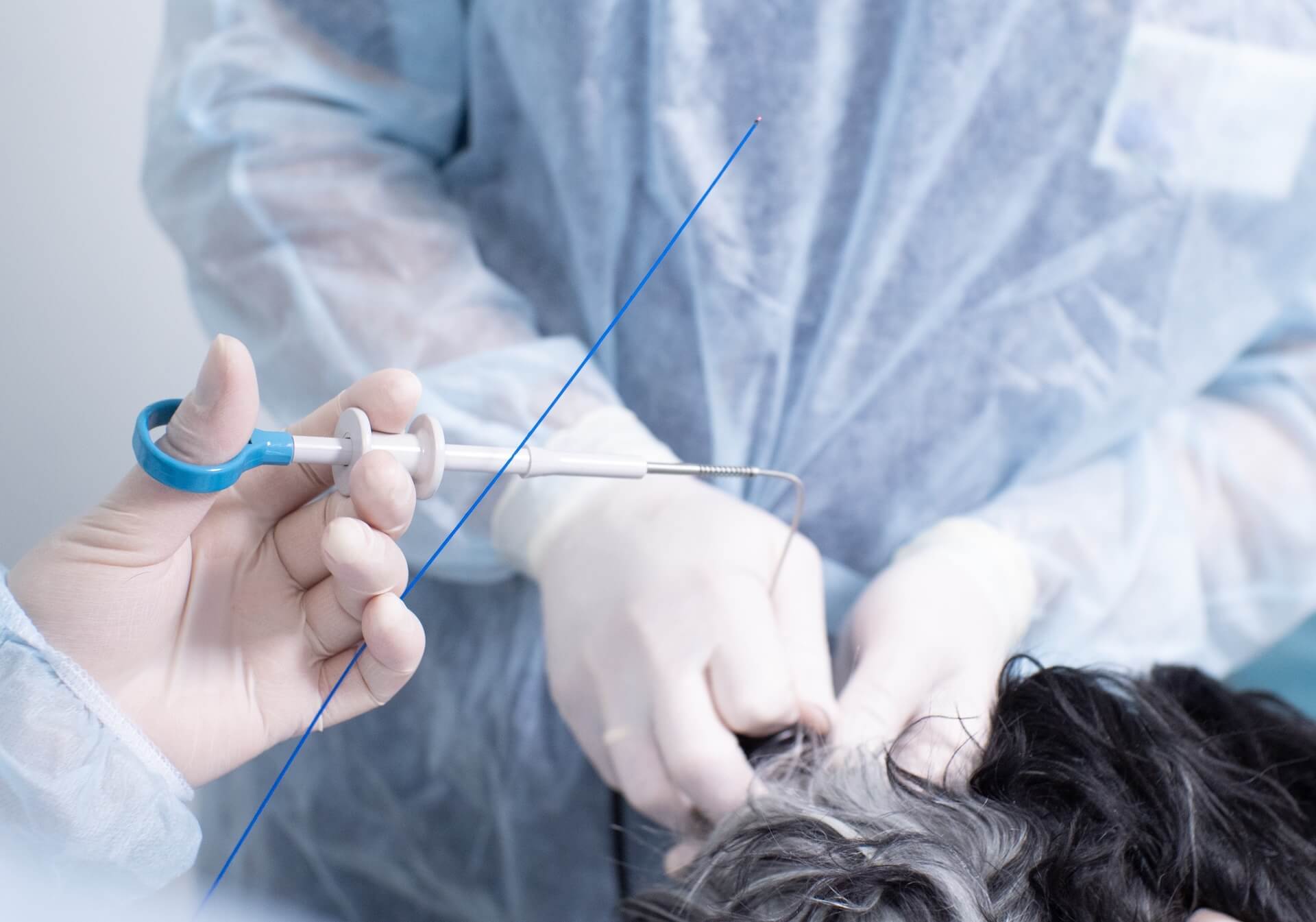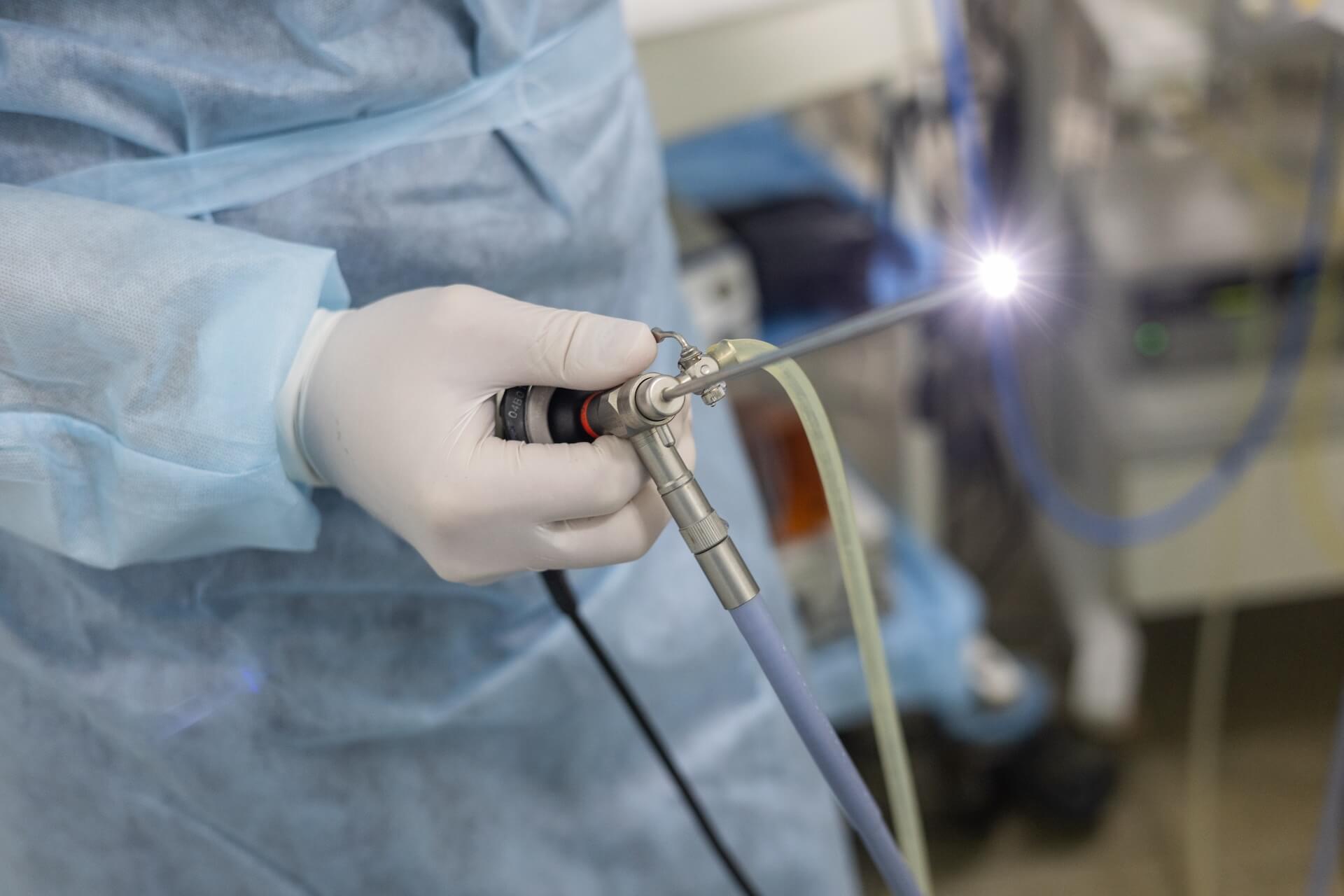 Dog owners know that the health and well-being of their pet is of the utmost importance. Fortunately, with the help of technology and advanced equipment, veterinarians can now diagnose and treat a variety of conditions with minimal invasiveness. An example of such a procedure is endoscopy, which is used to diagnose and even treat various issues in dogs. At Bay City Veterinary Clinic & Equine Hospital, we strive to provide pets with the highest quality services and advanced technology to help your four legged friends live the happiest and healthiest lives possible. We are also dedicated to offering pet owners all the information they need to make informed decisions regarding their pet’s treatment plans, so they can rest assured their dog’s health is in competent hands.
Dog owners know that the health and well-being of their pet is of the utmost importance. Fortunately, with the help of technology and advanced equipment, veterinarians can now diagnose and treat a variety of conditions with minimal invasiveness. An example of such a procedure is endoscopy, which is used to diagnose and even treat various issues in dogs. At Bay City Veterinary Clinic & Equine Hospital, we strive to provide pets with the highest quality services and advanced technology to help your four legged friends live the happiest and healthiest lives possible. We are also dedicated to offering pet owners all the information they need to make informed decisions regarding their pet’s treatment plans, so they can rest assured their dog’s health is in competent hands.
What is a Dog Endoscopy?
Endoscopy is a medical procedure involving the use of an instrument called an endoscope. An endoscope is a long, flexible tube that has a bendable tip, a camera, and a light attached. These components are used to visualize your dog’s internal environment in order to make an accurate diagnosis according to what is observed. Endoscopy offers a minimally invasive option for veterinarians who need to investigate health issues in your dog and address them appropriately. Such issues commonly involve the respiratory tract, gastrointestinal tract, and urinary tract. Endoscopy is such a favorable approach due to its minimally invasive nature and low risk, as opposed to traditional surgery.
When is a Dog Endoscopy Used?
Endoscopy is commonly used to diagnose and treat a variety of conditions in dogs. It can be used to identify the cause of clinical signs such as vomiting, diarrhea, abdominal pain or swelling, weight loss, loss of appetite, respiratory issues, or urinary problems. Additionally, an endoscope can detect abnormalities such as inflammation, abnormal swelling, scarring, strictures (narrowing), foreign objects or bodies, stones, tumors, and ulcers. The procedure is also equipped with a small channel through which biopsy instruments can be passed to take tissue samples for further examination.
Benefits of Dog Endoscopy
 The primary advantage of dog endoscopy is its minimally invasive nature, faster recovery time, and reduced discomfort for the pet compared to traditional surgical procedures. Moreover, endoscopy provides extremely accurate diagnostic information that cannot always be obtained via other diagnostic tests, such as urine and blood tests. It also provides a relatively straightforward solution for removing foreign objects causing obstructions in your dog without requiring surgical intervention. Finally, an endoscope is fully equipped with specialized tools that allow veterinarians to safely collect tissue samples and biopsies for further testing, effectively facilitating the identification of health issues in your dog.
The primary advantage of dog endoscopy is its minimally invasive nature, faster recovery time, and reduced discomfort for the pet compared to traditional surgical procedures. Moreover, endoscopy provides extremely accurate diagnostic information that cannot always be obtained via other diagnostic tests, such as urine and blood tests. It also provides a relatively straightforward solution for removing foreign objects causing obstructions in your dog without requiring surgical intervention. Finally, an endoscope is fully equipped with specialized tools that allow veterinarians to safely collect tissue samples and biopsies for further testing, effectively facilitating the identification of health issues in your dog.
What Problems Can be Diagnosed with a Dog Endoscopy?
Endoscopy is used to diagnose and treat a wide range of conditions in dogs. The procedure can be used to investigate gastrointestinal issues, including vomiting, diarrhea, weight loss, abdominal pain or swelling, or loss of appetite. Additionally, it is often used to look for abnormalities in the respiratory tract such as sneezing, nasal discharge, nasal congestion, nasal bleeding, and chronic cough. Endoscopy can also help identify urinary system issues such as cystitis (inflammation of the bladder) and tumors.
What Will the Veterinarian be Looking For During a Dog Endoscopy?
During a dog endoscopy, the veterinarian will be looking for inflammation, areas of swelling or stricture (abnormal narrowing), and foreign objects such as bones, toys, or hairballs. The procedure also allows for biopsy samples to be taken from the affected area and sent off to a veterinary pathologist for further evaluation. This is exceptionally helpful in diagnosing certain conditions such as tumors or other abnormal cells.
Do I Need to Take My Dog to a Specialist for an Endoscopic Exam?
Some cases require a veterinary internal medicine specialist to perform a thorough endoscopic exam, as such professionals have the necessary experience and equipment to perform such procedures more efficiently. If this is the case, your dedicated veterinarian will advise you to consult a reputable specialist with an impressive track record to ensure optimal results.
Will My Dog Need Anesthesia to Undergo an Endoscopic Exam?
 Endoscopic procedures do require dogs to go under anesthesia for multiple reasons. For one, although endoscopy is minimally invasive, it is still uncomfortable for your pet, and anesthesia ensures they do not have to endure undesirable sensations. Anesthesia also advances the safety and effectiveness of the procedure by allowing a veterinarian to investigate your dog’s internal environment with ease. As endoscopy often entails observing the intestines, stomach, and esophagus, anesthesia just guarantees a calm and controlled experience for all parties involved. Your veterinarian will always perform a series of tests before the anesthetic procedure to ensure your dog will respond and recover well.
Endoscopic procedures do require dogs to go under anesthesia for multiple reasons. For one, although endoscopy is minimally invasive, it is still uncomfortable for your pet, and anesthesia ensures they do not have to endure undesirable sensations. Anesthesia also advances the safety and effectiveness of the procedure by allowing a veterinarian to investigate your dog’s internal environment with ease. As endoscopy often entails observing the intestines, stomach, and esophagus, anesthesia just guarantees a calm and controlled experience for all parties involved. Your veterinarian will always perform a series of tests before the anesthetic procedure to ensure your dog will respond and recover well.
How Should I Prepare My Dog for an Endoscopy?
It is essential to prepare your dog appropriately for an endoscopic procedure to be successful. The first step is to fast your dog for 12-18 hours prior to the exam. This clears the gastrointestinal tract, which helps ensure the accuracy of the examination. Your vet may also need to give your dog an enema if they feel it is necessary. Additionally, you should bring a stool sample to the appointment in case it’s needed during the endoscopy. Finally, you should discuss with your veterinarian any concerns or questions you have about anesthesia and recovery before undergoing the procedure.
Will My Dog Need Any Special Treatment to Recover from an Endoscopic Exam?
Most dogs make a quick and easy recovery from an endoscopic exam and rarely require any special treatment. Once they are awake and alert after the anesthesia wears off, they can typically be sent home the same day as the procedure. However, it is important to monitor your dog’s behavior, appetite, and energy levels during their recovery period. If you notice any signs of discomfort, pain or continuing health issues, contact your veterinarian promptly for further evaluation. Additionally, if the endoscopic exam involves biopsy or removal of a foreign body, your dog may need additional post-procedure care such as medication and follow-up visits or changes in diet. Finally, watch for potential complications such as fever, vomiting, diarrhea or blood in your dog's stool. Should any of these symptoms appear, contact your veterinarian immediately for further evaluation.
Conclusion
Endoscopy is a useful and minimally invasive procedure for diagnosing and treating a variety of conditions in dogs. It offers pet owners the advantage of faster recovery times, reduced discomfort for their pets, and precise diagnostic information. At Bay City Veterinary Clinic & Equine Hospital, our experienced veterinarians are well-equipped to perform safe and effective endoscopic exams with minimal invasiveness and fast recovery times. We look forward to helping keep your pet healthy. If you live in the Bay City, Texas area, feel free to reach out to us at (979) 245-6364 with any questions and concerns you may have, and we will do our best to put your mind at ease and help you make an informed decision.
